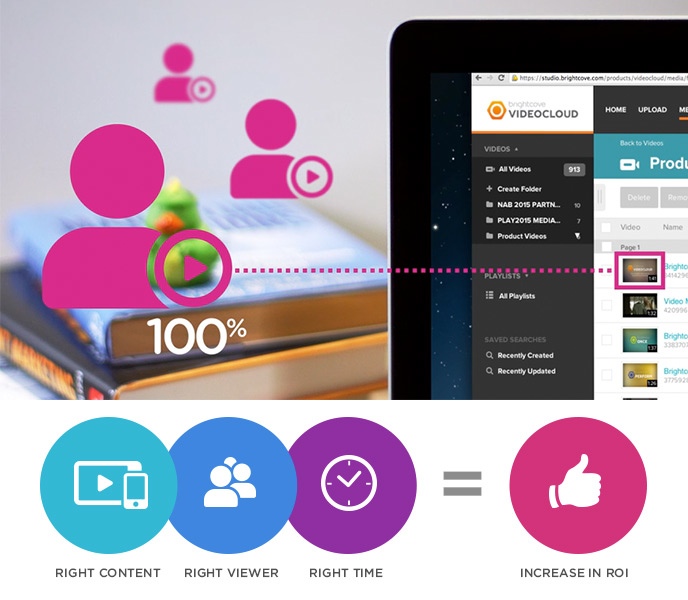Four Steps to Start Building Predictive Models
While predictive analytics and AI are big topics in the sales and marketing profession these days, it can feel daunting when you’re trying to figure out how to get started with these data-dependent solutions. Although most marketers probably won’t actually be building any data models themselves, it’s vital that the next wave of go-to-market professionals develop a solid understanding of how to solve business problems using data. In this series of articles, I’ll break down key concepts surrounding these technologies piece-by-piece, and provide a helpful look under the hood of predictive modeling.
Business folks who are ready to get their feet wet with AI should first zoom out and learn the basics of predictive modeling – one of the underlying technologies that’s required in order to effectively replace human functions with machines. AI solutions use this advanced data science to process, understand, translate and interpret all the data that’s out there, and parse its meaning into visual and actionable outputs.
Let’s explore each of the four main phases of building predictive models:
1) Data acquisition
When it comes to building a predictive model, the first step is to gather all of your inputs or data sources. There’s no question that sales and marketing teams are acquiring a plethora of data. In many cases, however, marketers are collecting data that only they care about, and it might not be valuable, insightful or actionable for sales (and vice versa). Regardless, given the mass adoption of passive marketing channels, low-barrier free trials, etc., most businesses are gathering a lot of data about their prospects at scale – much of which can be used to inform smarter predictive models.
2) Data preparation
Before digging into all this data, it’s important to first step back and figure out what business problem you are trying to solve with AI, which will help you prioritize your data preparation tasks. The reality is that it’s very common for data to be incomplete and dirty (there’s no getting around the human error that comes with data entry), so data preparation is crucial to the future of AI. Your data should be properly cleaned up, if you will, so that you can normalize typical errors during the data acquisition phase, and ultimately produce a sound model. Only then, will predictive analytics answer your specific questions and drive the actions you want. Some common ways to prepare your data include enrichment (bringing in external signals to complement current records), spam analysis and title normalization – stay tuned for more on these techniques in my next post.
3) Modeling
Once you understand the machine-learning problem you want to solve for, the next step to building a model is to employ data science methodologies like classification or regression. Classification is also known as probability estimation, and it is used to predict which of a small set of classes each individual belongs to. For instance, you might ask “Among customers of Company X, who is most likely to respond to this offer?” There then would be two classes: “Will Not Respond” or Will Respond.”
On the other hand, regression (or value estimation) is used predict the numerical value of some variable for each individual. Looking at historical data, you might produce a model that estimates a particular variable specific to each individual, such as “How much will this customer use this service?” Both of these techniques, and many others, can deliver model outputs that drive powerful AI and predictive analytics use cases in sales and marketing.
4) Output
For example, sales teams can achieve major performance management improvements by using predictive models to improve the way they filter and prioritize both inbound leads and account-based outreach tactics. With score outputs that indicate which leads look most like the company’s ideal customer, sales can confidently focus their time on just those prospects that are likely to buy. In addition, teams can use AI to more thoughtfully route their leads – either to SDRs for outreach and development over time, to account executives for more aggressive follow-up, or to automated nurture programs – based on each lead’s potential value. Predictive behavior models can also alert sales when an old lead starts acting like a customer. By looking at engagement patterns in marketing automation and web analytics systems, you can determine when neglected leads are likely getting close to a conversion threshold. This helps reps find good qualified accounts and contacts that are “reawakening,” and then trigger data-driven workflows for more aggressive follow-up with just the right message at just the right time.
Another valuable use case for AI is to drive marketing efficiency. With the right customer intelligence, marketing teams can optimize conversions for the greatest possible funnel efficiency. And since predictive analytics outputs deliver immediate feedback on the quality of marketing campaigns, they can easily calculate key performance metrics in real-time rather than waiting for sales cycles to play out. Accurate predictions also add value when it comes to quantifying key marketing performance indicators like cost per good lead, average lead quality, pipeline-to-spend ratio, etc. By using these KPIs to look past traditional vanity metrics and identify top performing campaigns and content, marketers gain deeper insights into which programs attract the highest quality leads, drive larger deals, and accelerate deal velocity.
Each of these four steps to the predictive model build process is important to understand if you want your models to produce statistically accurate predictions, and these phases become increasingly mission-critical as AI takes over more and more everyday tasks from humans. No one wants to miss out on real revenue, just because AI made unnecessary mistakes when determining outbound prospecting lists or writing the content of sales outreach emails.
About Sean Zinsmeister
A regular MarTech Series Expert contributor, Sean Zinsmeister crafts the positioning, messaging and overall go-to-market strategy for Infer’s trove of next-generation predictive analytic models. Once a satisfied Infer customer himself, Sean joined Infer from Nitro, a San Francisco-based document management software company, where he developed and led an award-winning global marketing team. Sean holds advanced degrees from Suffolk Sawyer School of Business and Northeastern respectively in strategic marketing and project management. Sean also hosts the sales and marketing technology podcast show Stack & Flow.













Comments are closed.